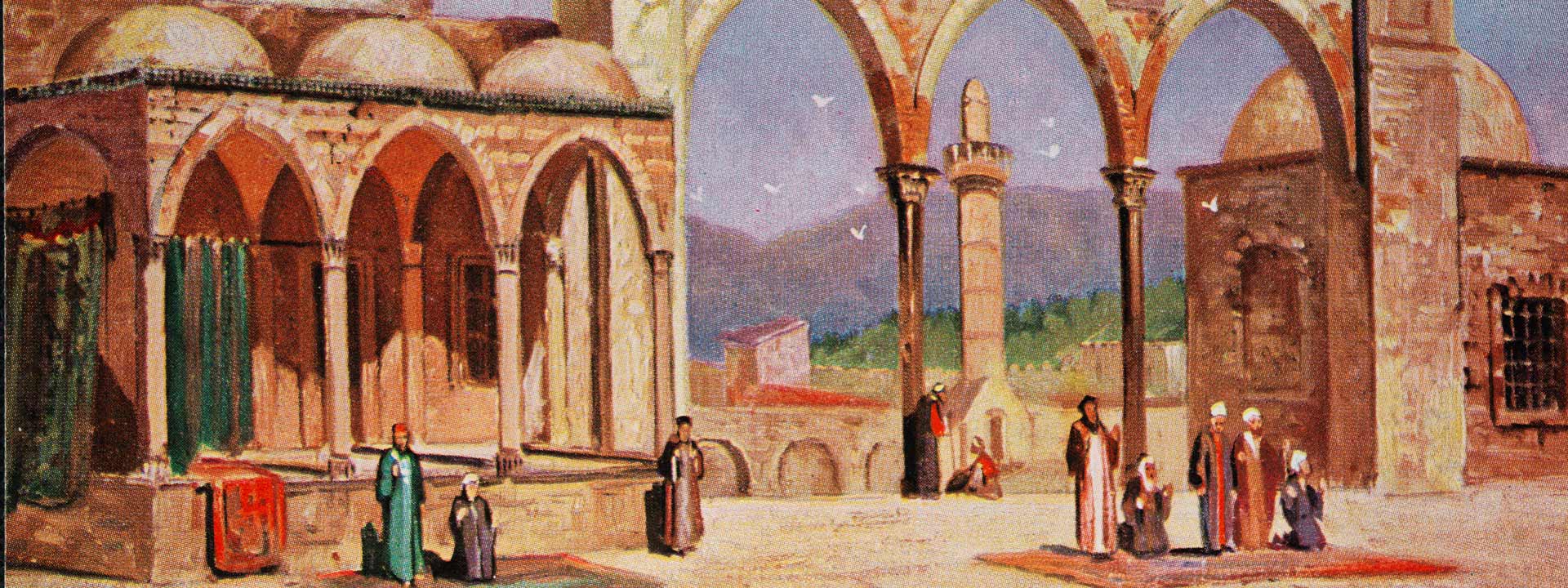Major Figures in Islam
From the seventh to the tenth centuries, Islamic civilization established itself from western China to the Iberian Peninsula. As much as Islam encompasses a wide range of cultures, languages, and peoples, certain common characteristics have given it a large degree of unity. These include the Quran, the hadith traditions of the Prophet Muhammad, Arabic as the sacred tongue, and a sense of collective belonging to the larger Muslim community. However, the most significant factor uniting the diverse local manifestations of Islam were the scholars who moved freely across the fluid political boundaries and the complex tapestry of local and regional identities. For these scholars, the “quest for knowledge” (riḥla fī ṭalb al-ʿilm) was of unquestionable value; in a culture that saw oral instruction, passed from master to student, as so important, many scholars traveled great distances in search of qualified teachers. This phenomenon continues to play a role in the Muslim world today.
Already in the earliest period of Islamic history, religious scholars attained positions of leadership in various Muslim societies. These were, first of all, figures who had been granted the principal authority for the interpretation and application of the Quran and hadith (from which their name, ʿulamāʾ, those who possess knowledge, ‘ilm, derives). However, beyond this religious and spiritual authority, they were also the primary mediators between the masses and the various ruling elites. Many of these scholars, who wrote primarily in Arabic, Persian, and Turkish, but other languages as well, were renaissance men who had attained mastery of numerous fields well beyond the confines of the religious disciplines: science, literature, historiography, medicine, mathematics, art, and more. Their contributions to these and other fields influenced the history of ideas in the Islamic world as well as in Europe, the Far East, Sub-Saharan Africa, and elsewhere.
Among the intellectual giants who left their mark on the Islamic world, we can point to several representative examples. One is the eleventh century Abū Ḥāmid al-Ghazālī, whose synthesis of Islamic law and Sufi mysticism profoundly influenced the development and shape of Sunni Islam in later generations. Another is the philosopher and scientist Ibn Sīnā, Ghazālī’s contemporary, who shaped the course of metaphysics as well as medicine. Just as central are the thirteenth century mystics Ibn ʿArabī, the greatest Sufi philosopher, and the poetic master Jalāl al-Dīn al-Rūmī. Rūmī and other Persian poets such as Firdawsī (11th century), Niẓāmī (12th century), and Ḥāfiẓ (14th century) continue to be cornerstones of Iranian culture until today. The polymath thirteenth century Shi‘ite scholar Naṣīr al-Dīn al-Ṭūsī was the author of numerous, influential works in the fields of philosophy, ethics, and the sciences; his astronomical studies were also a major influence on later European scientists like Copernicus. Finally, we can point to influential legal scholars such as Ibn Taymiyya (14th century), considered the spiritual father of the Salafi movement, or Jalāl al-Dīn al-Suyūṭī (15th century), who wrote hundreds of works in fields ranging from Quran interpretation, hadith, and historiography to lexicography, pharmacology, and mysticism.
The National Library of Israel is home to hundreds of manuscripts, many of them already digitized, and thousands of printed works that contain this rich intellectual, religious, and spiritual tradition, as well as the best modern research in the field. In particular, the Yahuda manuscript collection includes rare copies of works by the influential figures mentioned above, as well as commentaries on them. These treasures can help readers learn about the diversity of Islam and its connections to other cultures and civilizations.

 Sign in with Google
Sign in with Google
 Sign in with Facebook
Sign in with Facebook

